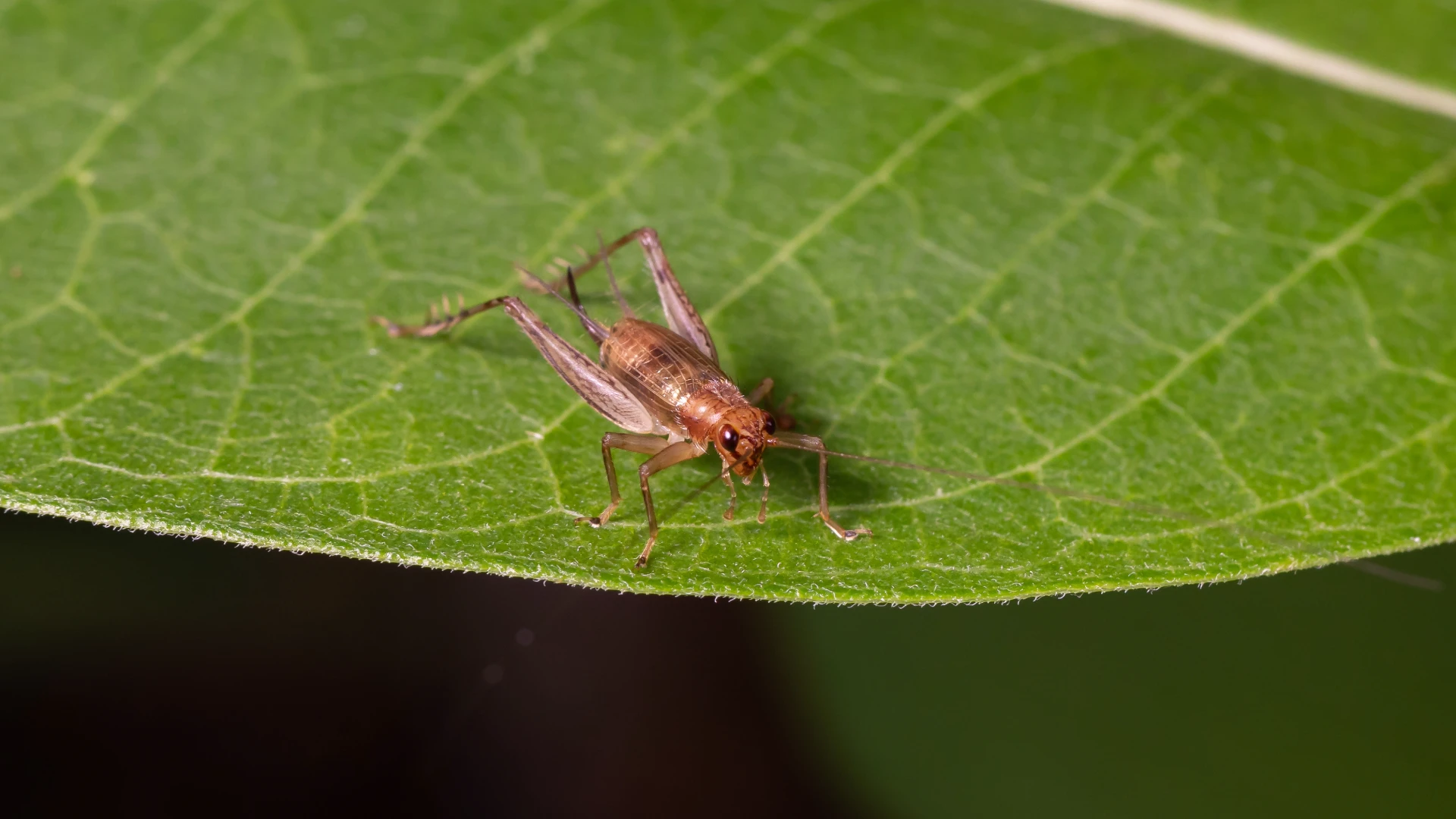
iStock | JJ Gouin
Editor’s Note: This article was reprinted with permission from Pinto & Associates.
The chirp of a cricket has a certain appeal. But that same chirp in a bedroom or behind the living room sofa can drive your client crazy. As the weather cools and vegetation dries up in the fall, crickets move indoors. Inside, crickets will feed on garbage and can also damage fabrics, paper, leather, and rubber. The crickets below are the ones that tend to move indoors, so familiarize your staff with them now so your company is ready to respond this fall:
Field Cricket: Usually black with brown wings, shiny black head, large bodied, long antennae. The most common indoor pest cricket. However, it can’t adapt to inside conditions and dies in a short time. It is attracted to lights and flies and jumps well.
House Cricket: Yellowish brown or straw colored with three dark bands on the head, long antennae. Survives and even breeds indoors. House crickets are attracted to lights and they fly and jump well.
Camel Cricket: Also called stone or cave cricket. Back is arched and rounded. Light brown with darker brown banding, very long antennae and long, large, hind legs. Doesn’t fly or chirp, not attracted to lights. May move indoors into cool, damp areas but rarely found in living areas.
Mole Cricket: Light to dark brown, short antennae, short front legs with shovel-like digging claws. Poor flier and non-jumper. Burrows in moist, sandy soils and feeds on turf or crop plants. May enter buildings, especially basements, if burrows are flooded. They are attracted to lights.
MORE ON FIELD CRICKETS. Brown-black field crickets are largely unnoticed until late summer when suddenly they’re everywhere. They’re common in fields, weedy lots and along roadsides where they feed on vegetation, field crops and occasionally other insects. In the North, there’s only one generation per year with adult crickets present in late summer and fall. In southern states, there can be as many as three generations per year.
Field crickets move indoors in the fall or when outdoor vegetation dries up. They don’t breed indoors and can’t live long in indoor conditions but their chirping can drive customers crazy.
You can keep field crickets from entering homes and other buildings the same way you keep out other occasional invaders — with an exterior perimeter treatment, along with caulking and sealing openings around the foundation. Treat a band 6 to 10 feet wide next to the foundation wall and 2 to 3 feet up the outside wall. Use a wettable powder or microencapsulated product labeled for exterior cricket control. Certain granular formulations are also labeled for outdoor perimeter control of crickets.
In addition to treating around the building foundation, don’t overlook these sites:
- In window wells and foundation vents
- Under porches and decks
- In heavy foundation mulch
- In weep holes in brick facing
- In stacked rocks or lumber
- Around basement windows
- In door thresholds
- In crawlspaces
- Under garbage cans
- Around garages, sheds and flower beds
Field crickets are attracted to lights and can fly so have your customer reduce outdoor lighting, especially around doorways. Removing heavy mulch, ivy, and piles of leaves, boards and other debris near the foundation will eliminate hiding places for crickets and other occasional invaders.
The authors are well-known industry consultants and co-owners of Pinto & Associates.

Explore the March 2010 Issue
Check out more from this issue and find your next story to read.